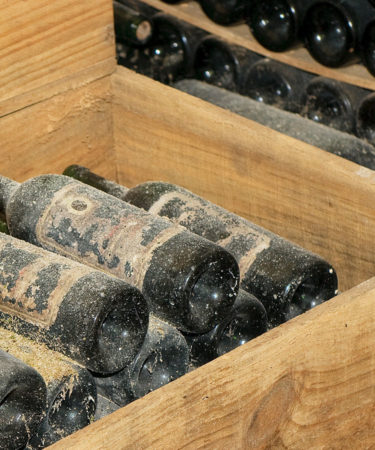If the Nelly song, “Hot in Herre,” describes the temperature in your home — clothing or lack thereof notwithstanding — then it’s likely your wine stash is at risk.
Amid all the noise of the wine industry–what to drink, when, and how–heat damage often comes up, but there’s no one-size-fits-all solution to proper storage, especially during sultry summer months. A myriad of factors, including a wine’s age, style, and closure, contribute to how easily wines are damaged. And heat doesn’t destroy bottles evenly, so it can be hard to know when a bottle is cooked.
The same way foods transform on the stove, wine changes as it experiences high temperatures. First, tannins become more noticeable and wines take on a tangy, astringent character. Instead of a smooth and supple mouthfeel, wines feel rough and more one-note on the palate. Fruit flavors often become secondary to unpleasant acidity. In dry climates, corks shrink as they lose moisture, leading to leaky bottles and a sticky mess. Other closures may be pushed upward and through the tops of their bottles as wine expands during temperature spikes. Older wines, and those with natural corks, are also at a higher risk of spoilage since they’re inherently more delicate than young wines and those sealed with synthetic closures. Anytime a wine from your rack is leaky, or tastes completely astringent, it’s probably been cooked.
Ideally, all wines would be stored perfectly at cellar temperature, somewhere between 55 and 65 degrees. This is the relatively cool temperature most wineries and tasting rooms maintain to ensure their wines age properly and show their best to potential buyers. “Maintain” is the key word when it comes to wine temperature, since the more heat and humidity fluctuations, the more a wine is likely to be damaged. The threshold for temperature damage begins at about 70 degrees, meaning even most air conditioned homes put wine at risk. Without AC, it’s all too easy to let wines cook as indoor temperatures hit 80 degrees and beyond. An occasional spike won’t decimate your collection, but prolonged exposure — like a week-long heat wave or full day in the car — can.
Even if your at-home storage is on point, damage often happens in transit. Inside a normal delivery truck without a temperature-controlled trailer, mercury easily rises over the 100-degree mark, essentially baking the wine. Packed tightly onto wooden pallets, stacks of wine cases not only absorb this heat but retain it. Depending on where a case is on the stack — in the center or edge, for example — the wines may hold that high temperature for hours or even days.
So what’s a drinker to do?
At home, the best and safest way to store wines is in a wine cellar (AKA basement, if you have one) or specialized refrigerator where temperature and humidity are controlled. Even with modern air conditioning, most homes are above the 70-degree threshold that puts wines at risk of spoiling.
If you don’t have a wine fridge, simply toss your wines — reds included — into the regular fridge. (You know those produce drawers aren’t being fully utilized, anyway.) The humidity in a regular refrigerator won’t harm your bottles in the short term, and removing them 15 to 30 minutes before serving will warm them to an ideal serving temperature. This is an especially good strategy if you happen to be headed out of town and the AC won’t be running in your home.
Cool, dark places away from windows, such as closets, are another alternative spot to keep wine safe. Light also harms wine, and glass amplifies the heat of the sun like a magnifying glass, so keeping bottles off sunny countertops is a good rule of thumb.
When shopping for wine, stay away from stores that seem especially hot or humid or that leave case boxes on the sidewalk for hours. If a cork looks sticky, pushed up, or like it’s been leaking, ask for a different bottle of the same wine. If you’ve gotten home with a seemingly good bottle and it tastes off, don’t hesitate to return it. Most stores can send the bottle back to the distributor for a replacement and are happy to exchange bottles as long as a significant portion of the wine isn’t gone.
Many online retailers, like WineLibrary.com, hold orders during peak summer months, and it’s best to follow their guidelines. Others may offer overnight or temperature-controlled shipping options, but these often carry a hefty price tag. Receiving a leaky case of cooked wine is always the worst, so if you forgot to plan ahead and need a special bottle, it’s best to spring for faster shipping.
If you’re traveling, keep wine in the passenger compartment of the car or store it in a cooler with ice. Between stops, don’t hesitate to bring special purchases into restaurants or tasting rooms. Many wineries will even hold bottles until the end of the day so it won’t be accidentally ruined during transport.
It’s always better to err on the side of caution when mixing wine with summer temps, and remember the fridge is your friend. When it doubt, take Vanilla Ice’s approach: Ice, Ice, Baby.
